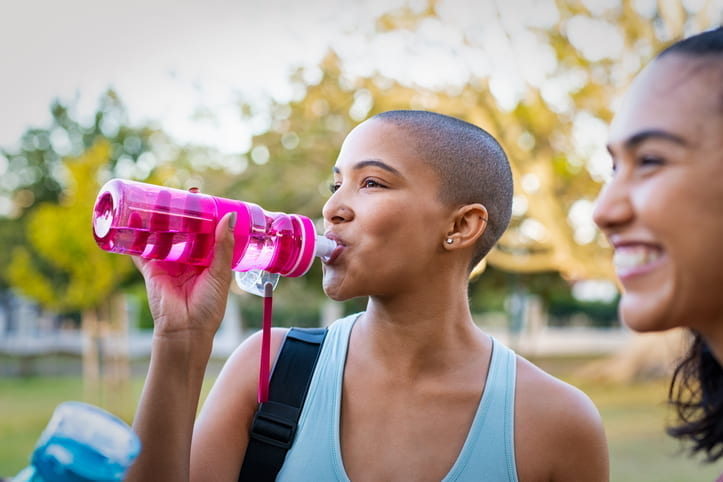What you drink is as important as what you eat. Here are some tips to help you make better beverage choices, from the U. S. Department of Agriculture’s ChooseMyPlate.gov
Drink water instead of sugary drinks when you are thirsty. It really is the perfect choice. It keeps us hydrated and healthy, it has no calories, and it is inexpensive. Regular soda, energy or sports drinks, and other sweet drinks usually contain a lot of added sugar, which provide more calories than needed. To maintain a healthy weight, sip water or other drinks with few or no calories.
Let your thirst be your guide. Water is an important nutrient for the body, but everyone’s needs are different. Most of us get enough water from the foods we eat and the beverages we drink. A healthy body can balance water needs throughout the day. But if you are an older adult, very active, or live or work in hot conditions, be sure you drink plenty of water.
Water is usually easy on the wallet. Save money by drinking water from the tap at home or when eating out. Fill a clean, reusable water bottle and store it in the refrigerator for when you go out. Reusable bottles are also easy on the environment.
Drinking water can help you manage your calories. Adults and children take in about 400 calories per day as beverages. Water has no calories.
Don’t forget your dairy. When you choose milk or milk alternatives, select low-fat or fat-free milk or fortified soy milk. Each type of milk offers the same key nutrients such as calcium, vitamin D, and potassium, but the number of calories are very different. Older children, teens, and adults need 3 cups of milk per day.
Enjoy your beverage. When water just won’t do, enjoy the beverage of your choice, but just cut back. Check the Nutrition Facts label for the number of servings in the container and number of calories per serving to help you know what you are drinking. It also shows how much fat, sugars, and other nutrients the beverage contains.
Juice provides benefits, if it is 100% juice. It provides vitamins and phytonutrients, but its natural sugars provide a lot of calories. The whole fruit is a better option; most juice contains little fiber. Adults should limit juice to 1 cup of 100% fruit or vegetable juice each day, and children 1/2 to 1 cup, depending on age. Read the list of ingredients to see if it is 100% juice.
If plain water is not for you, here are a few ideas to try, from Iowa State Extension:
- Freeze juice in ice cube trays and use to cool down your glass of water.
- Put cut-up fruit in a pitcher of water in the refrigerator. Oranges, lemons, limes, kiwi and berries will flavor the water.
- Put water in a special cup. Children especially may find water more fun.
- Add a little low-calorie drink mix to your water.
Linda Altenburger, Senior Nutritionist, SNAP-Ed
